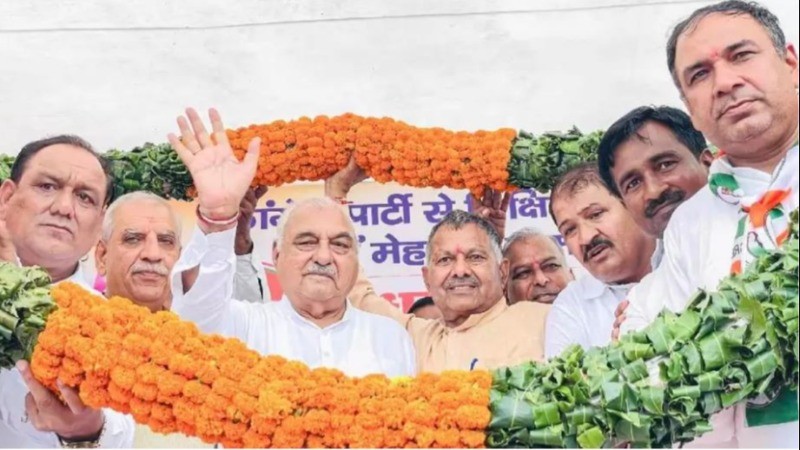
Haryana residents have long experienced uneven development, with certain regions receiving preferential treatment while others were neglected. Under Congress leader Bhupinder Singh Hooda's tenure as Chief Minister, there was a clear bias toward specific areas, primarily serving his political base, leaving large parts of the state underserved.
Hooda’s administration was accused of focusing resources on a favored region while ignoring the broader needs of the state. Funds collected from the public for statewide welfare were disproportionately allocated, benefiting a limited area at the expense of the majority.
The Gurgaon EDC Scandal
A glaring example of this favoritism was the mishandling of over ₹1,000 crore of the ₹5,000 crore collected under External Development Charges (EDC) in Gurgaon. Despite this large sum, the Hooda government admitted in court that the funds were not used for their intended purpose of development and welfare projects.
Regional Bias in Model Village Scheme
The bias extended to the model village scheme, with Bhupinder Singh Hooda’s home district of Rohtak benefiting significantly. Of the 65 villages designated as model villages, 36% came from just two districts, with Rohtak receiving a substantial portion. Meanwhile, districts like Sirsa, Mahendragarh, and Panchkula were overlooked.
This selective approach raised concerns, particularly in regions like Sirsa, represented by political opponents of Hooda. The lack of development in these areas fueled suspicions that the decisions were politically motivated rather than in the interest of the state's overall development.
Unequal Distribution of HUDA Resources
Between 2004-05 and 2013-14, the Haryana Urban Development Authority (HUDA) also demonstrated clear favoritism. Districts that didn’t align with Congress’ political interests—such as Rewari, Charkhi Dadri, Bhiwani, Mahendragarh, Hisar, and others—saw minimal progress. Resources were concentrated in politically favorable regions, leaving many parts of Haryana without significant development.
Broken Promises and Lost Hope
For residents in neglected areas, the Congress government’s promises often felt empty. The selective distribution of resources and development projects left large portions of the state underdeveloped, serving only the political interests of a favored few. This regionalism created a sense of betrayal among many who felt left behind by their own government.
During the Congress regime, the people of Haryana witnessed a government that appeared more concerned with serving political allies than addressing the needs of the entire state.
Here's Why Congress Faces Internal Struggles Ahead of 2024 Haryana Assembly Elections
Congress Releases 4thList of Candidates for Haryana Polls, Fields Parimal Pari vs BJP's Anil Vij
Haryana Assembly Elections: JJP-Azad Samaj Party Alliance Announces 34 More Candidates